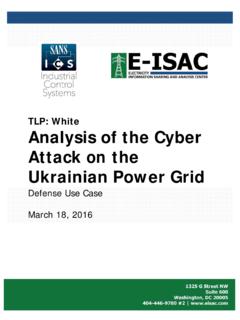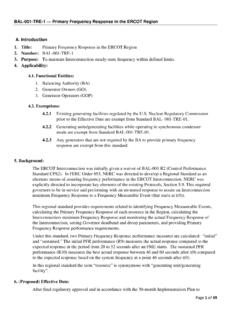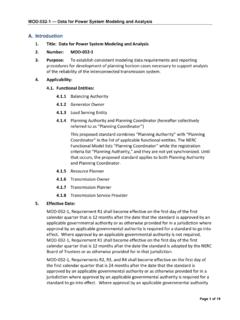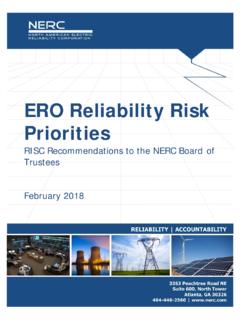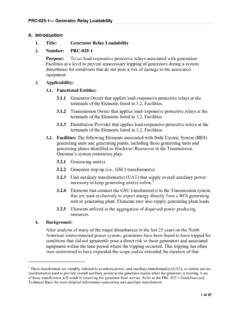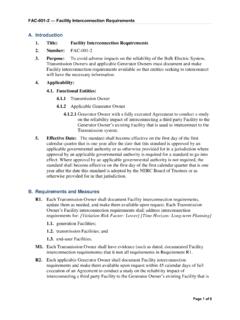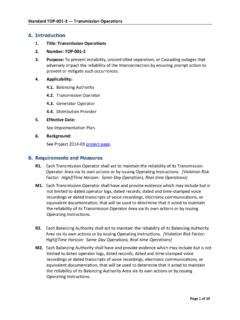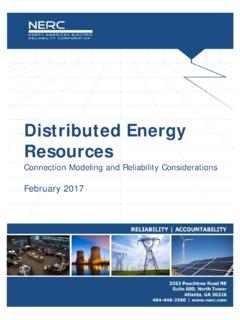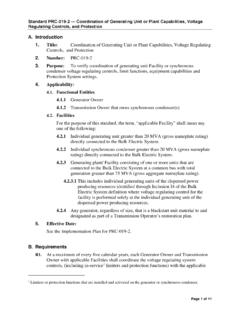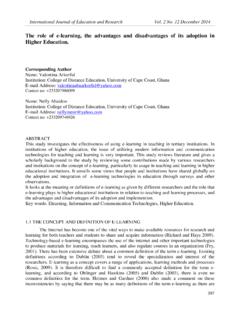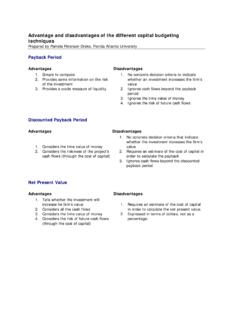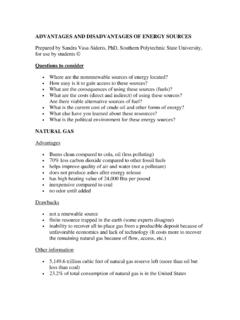Transcription of Advantages and Disadvantages of EHV Automatic …
1 Technical Reference Document Advantages and Disadvantages of EHV Automatic Reclosing NERC System Protection and Control Subcommittee December 2009 NERC Technical Reference on Advantages and i Disadvantages of EHV Automatic Reclosing December 2009 Table of Contents 1. 2. Significant Autoreclosing Events from the August 14, 2003 Northeast Blackout ..3 Argenta Battle Creek and Argenta Tompkins 345 kV line Autoreclosing ..3 Ontario Western New York Reconnection ..4 Reconnection Sequence at Reconnection Sequence at St.
2 Lawrence ..7 Toledo Reconnection ..8 Homer City Watercure ..10 3. Summary of Issues ..12 High-Speed Autoreclosing ..12 Review of Issues Related to High-Speed Autoreclosing ..12 Recommendations ..14 Potential Implementation of Synchronism Check Supervision ..18 Review of Issues Related to Synchronism Check Supervision ..18 Recommendations ..19 Potential Implementation of Voltage Supervision ..20 Review of Recommendations ..22 Single-phase Tripping and Autoreclosing.
3 23 Review of Recommendations ..24 4. APPENDIX A System Protection and Control Suncommittee This Technical Reference Paper was approved by the NERC Planning Committee on December 9, 2009. NERC Technical Reference on Advantages and ii Disadvantages of EHV Automatic Reclosing December 2009 List of Figures Figure Transmission System in South-Central 3 Figure Transmission System near 6 Figure Transmission System near St. Lawrence (Saunders).. 7 Figure Transmission System near Toledo, Ohio and Southeast 9 Figure Transmission System in the Homer City Watercure 11 Figure Voltage Difference Check Characteristic for High-Speed Autoreclosing 17 NERC Technical Reference on Advantages and 1 1.
4 Introduction Automatic reclosing (autoreclosing) is utilized on transmission systems to restore transmission elements to service following Automatic circuit breaker tripping. The autoreclosing scheme may be high-speed or time-delayed, supervised or unsupervised. It can consist of one shot or multiple shots (reclosing attempts) depending on attributes of the transmission system in the local area and the criticality of the line for transferring power across the system and/or supplying load. Supervision may include measurement of system voltages to determine whether adjacent elements are live (energized) or dead (de-energized), and to assess the phase relationship when both adjacent elements are live.
5 Logic may disable the autoreclosing scheme if acceptable autoreclosing conditions are not met within a defined time duration or the logic may wait indefinitely for acceptable conditions. The latter practice may be useful for restoration following a major disturbance during which several transmission elements have been tripped, although this practice may lead to unpredictable and potentially undesired autoreclosing. When this practice is used it should be based on analysis of the potential system conditions for which autoreclosing may occur in order to manage risk to equipment.
6 IEEE Standard , IEEE Guide for Automatic Reclosing of Line Circuit Breakers for AC Distribution and Transmission Lines, provides detailed information on the considerations that should be evaluated in establishing parameters for autoreclosing schemes. This paper is not intended to replicate the information in the guide, but rather to highlight some of the considerations based on observations of the August 14, 2003 Northeast Blackout. The Blackout Recommendation Review Task Force (BRRTF) observations focused primarily on the unsuccessful reclosure of the Argenta Battle Creek 345 kV line in south-central Michigan, which attempted to reconnect two systems that were rapidly moving apart.
7 Recognizing the trade-offs between the risks of unsuccessful autoreclosure and the operational benefits of restoring elements to service, the BRRTF Recommendation TR-20 states that: NERC should review and report on the Advantages and Disadvantages of autoreclosing methods on the EHV system including: High-speed Automatic reclosing for multi-phase and single phase operation Synchronism check reclosing While the BRRTF recommendation specifically references the EHV system, the SPCS notes in developing this white paper that several of the interesting events that occurred on August14, 2003 involved autoreclosing of 230 kV transmission lines.
8 The SPCS also notes that autoreclosing practices on 230 kV transmission lines typically are similar to those utilized on the EHV system. Therefore, the observations and recommendations contained in this white paper are applicable to all transmission lines operated at 200 kV and above. This paper does not address reclosing practices associated with sectionalizing transmission lines to restore service to tapped loads. Disadvantages of EHV Automatic Reclosing December 2009 NERC Technical Reference on Advantages and 2 This paper assesses the Argenta Battle Creek and Argenta Tompkins autoreclosing events in south-central Michigan as well as autoreclosing events between western New York and Ontario, New York and PJM, and reconnecting the Toledo, Ohio area to the Eastern Interconnection on August 14, 2003.
9 The conditions under which these autoreclosing events occurred are compared against the autoreclosing logic. For each case IEEE Standard is reviewed to assess what industry guidance is provided presently and where appropriate, considerations for additional guidance are presented. This report discusses single-phase tripping and autoreclosing, but the SPCS has not included any specific recommendations on this subject as no events on August 14, 2003 involved single-phase operation. Furthermore, no events of the August 14 disturbance point to potential issues with installations where single-phase tripping and reclosing is used.
10 Disadvantages of EHV Automatic Reclosing December 2009 NERC Technical Reference on Advantages and 3 2. Significant Autoreclosing Events from the August 14, 2003 Northeast Blackout Argenta Battle Creek and Argenta Tompkins 345 kV line Autoreclosing The Argenta Battle Creek and Argenta Tompkins 345 kV lines were initially tripped at 16:10 and 16:10 respectively, by directional comparison phase relays at the Argenta terminals only. Each line then autoreclosed (high-speed) seconds after it tripped.
